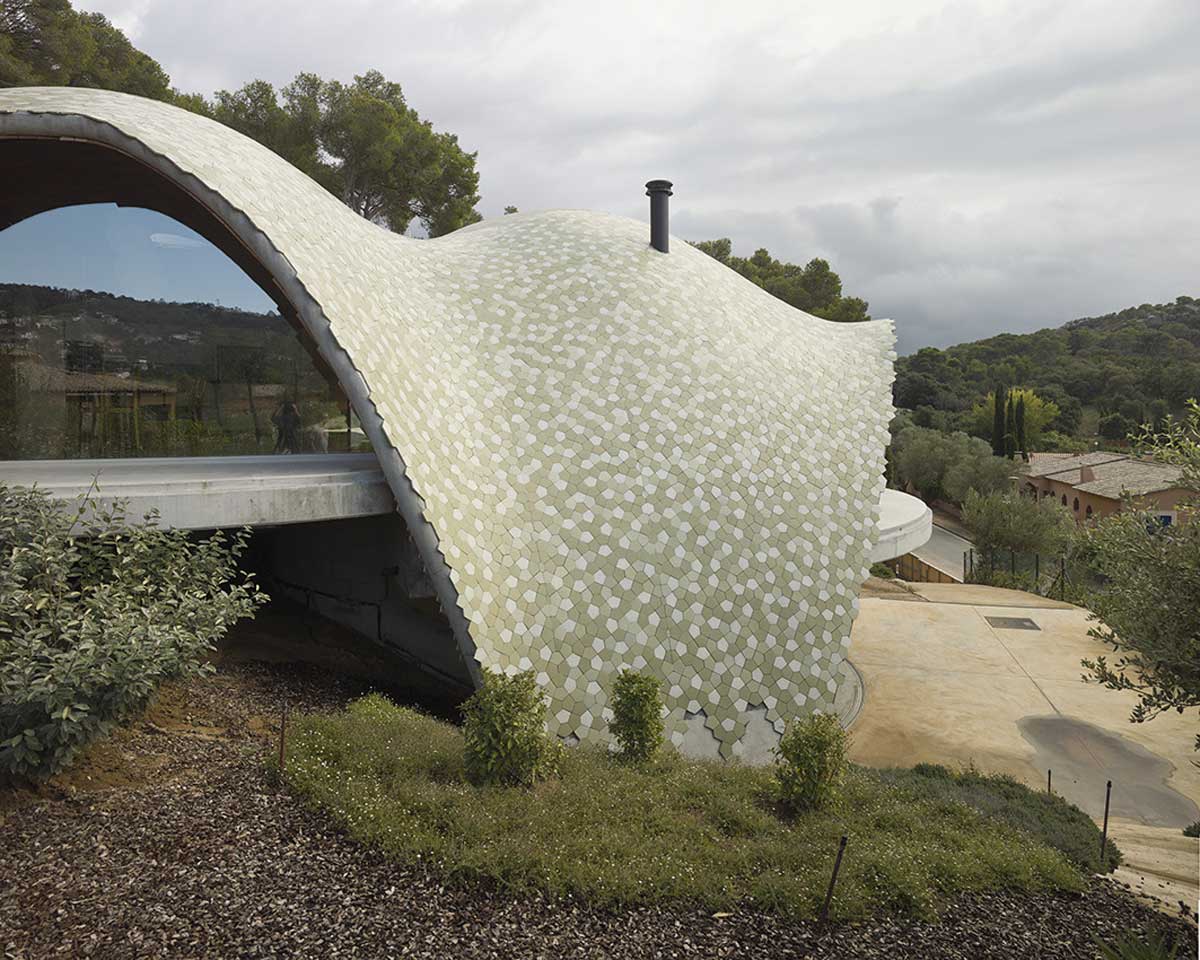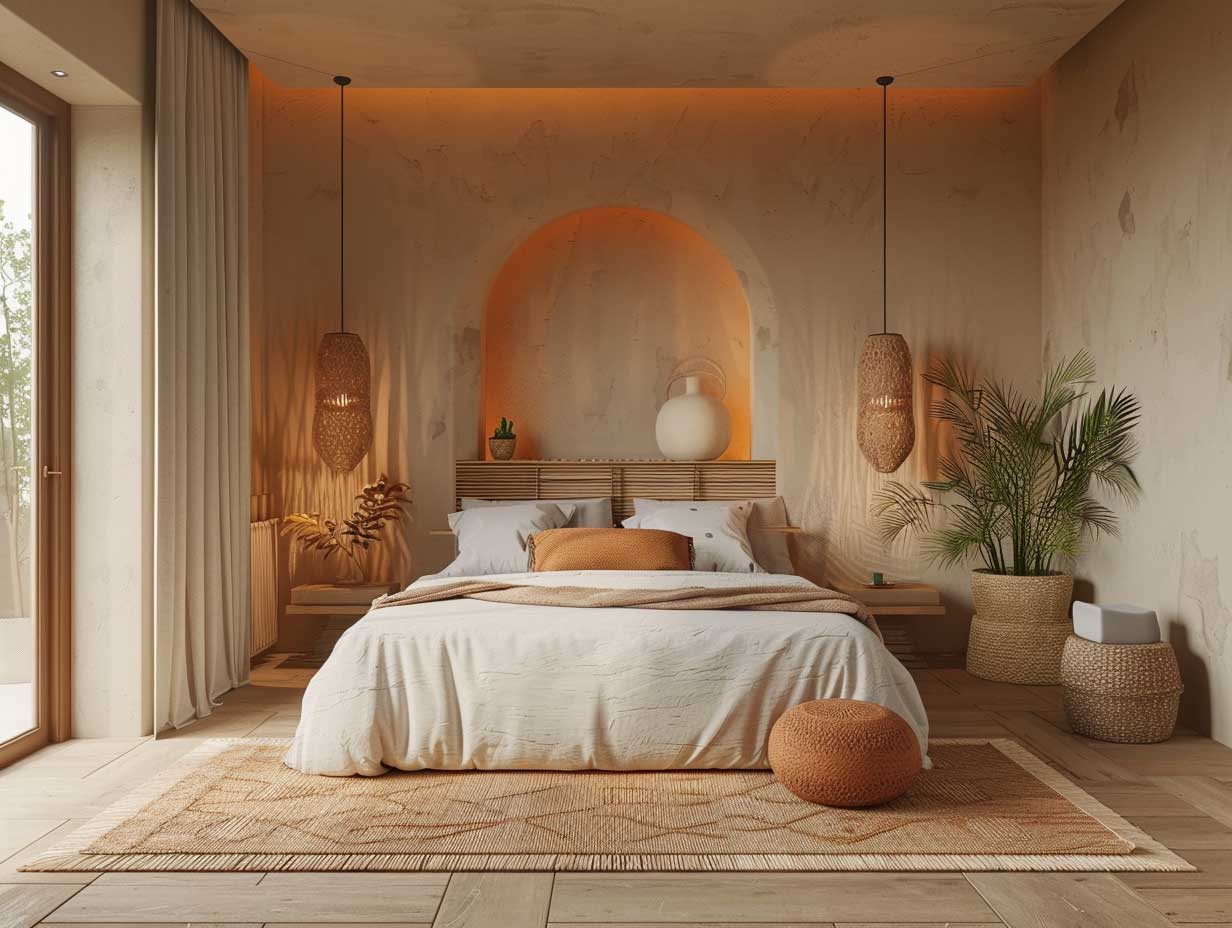Content
The fusion of natural materials with modern design has the power to transform an interior into something more than just a living space—it becomes a statement of balance between nature and innovation. The feeling of warmth, earthiness, and sophistication emerges when organic elements like wood, stone, and natural fibers are seamlessly integrated with sleek contemporary shapes and forms. This aesthetic is timeless yet forward-thinking, grounding yet elevated, and creates an environment that speaks to both comfort and beauty.






| Architects | https://makhno.com.ua/ |
| Images | https://www.behance.net/yevheniiavramenko |
Wood Accents Enhance the Interior Warmth
Wood, a natural material rich in texture and tone, plays a key role in enhancing the warmth of a modern living space. Its organic grains and earthy hues soften the sharpness of contemporary design, creating a welcoming atmosphere. In a modern setting, wood can be featured in flooring, wall cladding, or furniture, providing visual depth and tactile richness. Whether light-toned or dark, the material offers versatility, enabling it to adapt to various interior styles while maintaining its comforting quality.
Using wood in conjunction with other organic materials allows the design to feel grounded. For instance, wooden beams or paneling in a high-ceiling room introduces a sense of scale and texture, breaking up the otherwise sleek and polished surfaces. The contrast between the organic and the engineered is what gives the space its character. Additionally, wood often brings a sense of history or nostalgia into a home, even in the most modern of interiors.
In the case of furnishings, wood can take on sculptural qualities, especially when used in minimalist forms. Simple yet elegant wooden furniture pieces such as coffee tables, shelves, or chairs draw attention to craftsmanship and natural beauty. These items serve not only a functional purpose but also as art objects that enrich the room’s aesthetic.
Finally, the interplay between wood and light is something to behold. Natural light filtering through large windows interacts with the warm tones of wooden elements, casting gentle shadows and creating an inviting ambiance. This combination of wood and light further softens the edges of a modern space, adding warmth and a lived-in feel.







Concrete Brings Raw Elegance into Modern Design
Concrete is a material often associated with industrial or brutalist architecture, but in modern interiors, it brings a raw yet refined elegance. Its minimalist appeal stems from its ability to act as both a foundation and a focal point in design. Whether polished to a smooth sheen or left raw and exposed, concrete has the flexibility to enhance a space’s modern character without overwhelming it.
Used in flooring or walls, concrete provides a clean, neutral base that allows other materials like wood or fabric to shine. Its gray hues can complement a variety of color palettes, making it a versatile choice for those seeking both durability and aesthetic appeal. Concrete walls can add a sense of solidity and permanence to a room, grounding it while allowing for lighter, more ephemeral design elements to take center stage.
In contrast to its solid appearance, concrete can also be shaped and molded in unexpected ways. In modern interiors, it’s not unusual to find concrete taking on the role of an artistic element—sculptural fireplace surrounds, kitchen islands, or even bespoke sinks. Its versatility makes it a compelling choice for those who appreciate its architectural quality and sleek appearance.
Despite its industrial reputation, concrete can be surprisingly warm when paired with the right materials. The key to balancing its hardness lies in introducing softer, more tactile elements into the space, such as textiles, wood, or plush furniture. This contrast creates a harmonious balance that prevents the concrete from feeling too stark or cold.





Glass Expands Light and Space
Glass, as a modern material, has the unique ability to dissolve boundaries between interior and exterior spaces. In contemporary design, large glass windows or doors open up a living space, flooding it with natural light and creating a sense of openness. The reflective quality of glass enhances the perception of space, making even small rooms feel larger and airier.
In living spaces, floor-to-ceiling windows offer uninterrupted views of the outdoors, blurring the lines between nature and architecture. This design choice not only brings in light but also emphasizes the natural elements of the surroundings, whether it’s a garden, skyline, or forest. The effect is a seamless integration of the exterior landscape into the interior environment.
In addition to windows, glass is often used for partitions or walls in modern homes. Clear glass panels can separate spaces without the need for solid walls, maintaining the flow of light and air throughout the home. The transparency of glass contributes to a minimalist aesthetic, reducing visual clutter and allowing other design features to take precedence.
When combined with organic materials like wood or stone, glass adds a sleek, modern contrast. The sharp lines of glass paired with the softness of natural textures create a visually dynamic space. In furniture, glass-topped tables or shelving units offer a sense of lightness, allowing the focus to remain on other architectural elements or décor. Its versatility makes it an indispensable material in modern design.





Stone Adds Natural Texture and Timeless Appeal
Stone, with its inherent textures and natural variations, adds a sense of permanence and history to modern interiors. Whether polished or rough-hewn, stone provides a tactile and visual contrast that can complement the sleekness of other materials like glass or metal. Its enduring quality makes it a popular choice for both flooring and feature walls, where it can act as a centerpiece that grounds the entire space.
In modern interiors, stone is often used to create a dramatic statement. A stone fireplace, for instance, becomes the focal point of a living room, drawing attention with its bold texture and natural beauty. Whether the stone is smooth and polished or left in its raw form, it introduces a sense of authenticity to the space, connecting the home to the natural world.
Stone flooring offers both durability and aesthetic appeal, particularly in high-traffic areas like entryways or living rooms. Its natural variations in color and texture mean that no two stone surfaces are exactly alike, giving each space a unique character. Paired with wood or concrete, stone adds depth and richness to a room, enhancing the overall design.
In addition to flooring and walls, stone can be used in smaller applications such as countertops or accent pieces. A stone-topped kitchen island or bathroom vanity brings a sense of luxury and craftsmanship to the space. Its ability to blend seamlessly with both modern and traditional elements makes it a versatile material for any interior.



The beauty of combining organic materials like wood, concrete, glass, and stone in a modern living space lies in their ability to enhance both the visual and tactile experience. Each material brings its own unique qualities, creating a harmonious balance between nature and contemporary design. Together, they form an interior that feels both grounded and elevated, a testament to the power of thoughtful, inspired architecture.






